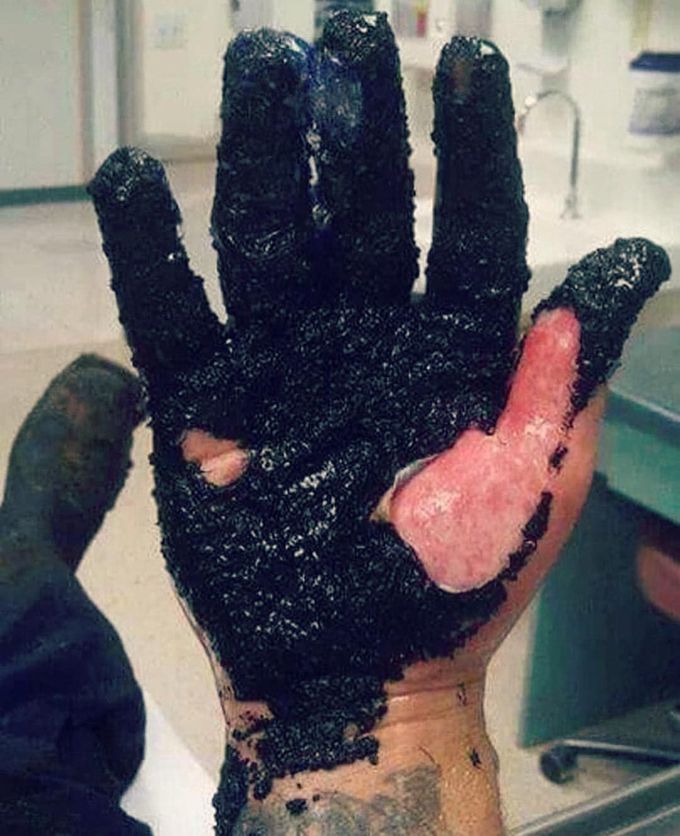


Here is a serious case of asphalt burn
Hot tar and asphalt have many industrial applications such as road surfacing, roofing and waterproofing. Tar is a petroleum-distillate, composed of long-chain hydrocarbons, which waxes at high temperatures. Boiling points of paving bitumen (asphalt) and roofing tar are 140C and 232C respectively. When tar splatters it rapidly cools to between 93C and 104C. This temperature is sufficient to inflict serious burns. Initial treatment involves early cooling with water to limit tissue damage and prevent further spread of the tar. However, cooling is advised only until the tar has hardened to prevent hypothermia. The tar then needs to be removed to allow assessment of the wound and reduce the risk of infection, as skin bacteria can proliferate freely under an occlusive barrier of tar. Removing the tar is often difficult because of its sticky consistency, which causes it to adhere tightly to the skin. Manual debridement has been used in the past, but this is painful and damages viable skin, inflicting further tissue injury and increasing the risk of infection. Chemical debridement using recognised organic solvents such as kerosene, gasoline, acetone and alcohol are of limited use and have the potential to cause skin irritation and even systemic toxicity through absorption. Follow us @medshots for more
how did you/they manage to take off the tar,did it peel off the skin??


